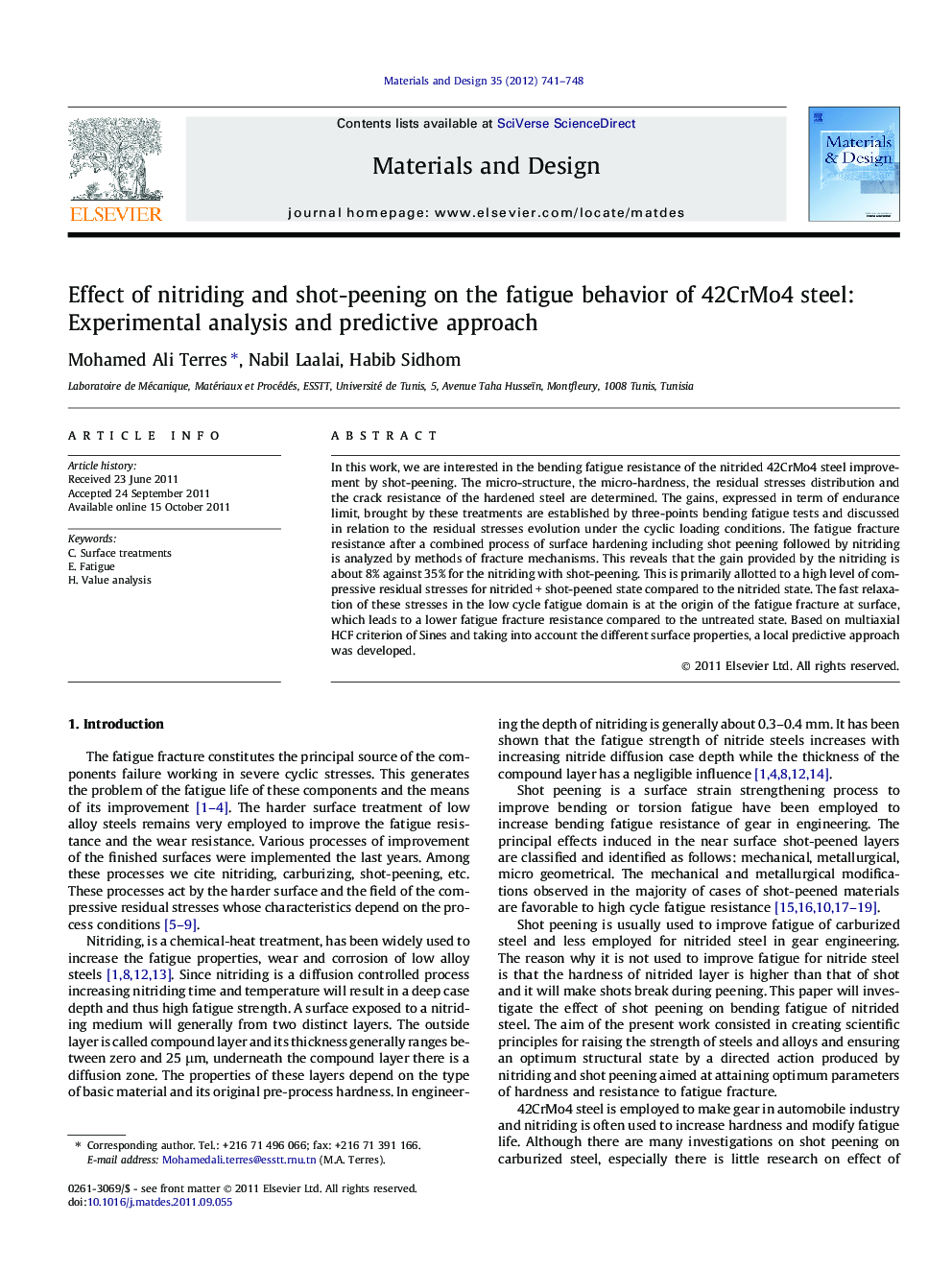| Article ID | Journal | Published Year | Pages | File Type |
|---|---|---|---|---|
| 830997 | Materials & Design (1980-2015) | 2012 | 8 Pages |
In this work, we are interested in the bending fatigue resistance of the nitrided 42CrMo4 steel improvement by shot-peening. The micro-structure, the micro-hardness, the residual stresses distribution and the crack resistance of the hardened steel are determined. The gains, expressed in term of endurance limit, brought by these treatments are established by three-points bending fatigue tests and discussed in relation to the residual stresses evolution under the cyclic loading conditions. The fatigue fracture resistance after a combined process of surface hardening including shot peening followed by nitriding is analyzed by methods of fracture mechanisms. This reveals that the gain provided by the nitriding is about 8% against 35% for the nitriding with shot-peening. This is primarily allotted to a high level of compressive residual stresses for nitrided + shot-peened state compared to the nitrided state. The fast relaxation of these stresses in the low cycle fatigue domain is at the origin of the fatigue fracture at surface, which leads to a lower fatigue fracture resistance compared to the untreated state. Based on multiaxial HCF criterion of Sines and taking into account the different surface properties, a local predictive approach was developed.
► The HCF performance of 42CrMo4 steel was studied with the aim of determining the influence of N and N + Sp. ► The obtained results show a significant improvement of the fatigue limit of the N + Sp state (35%) as compared to the N state (8%). ► The stabilized residual stress and superficial work-hardening were important factors on fatigue strength. ► A method based on mutli-axial fatigue criterion has been presented to predict HCF behavior. ► Good agreement has been observed with the experimental investigation.
